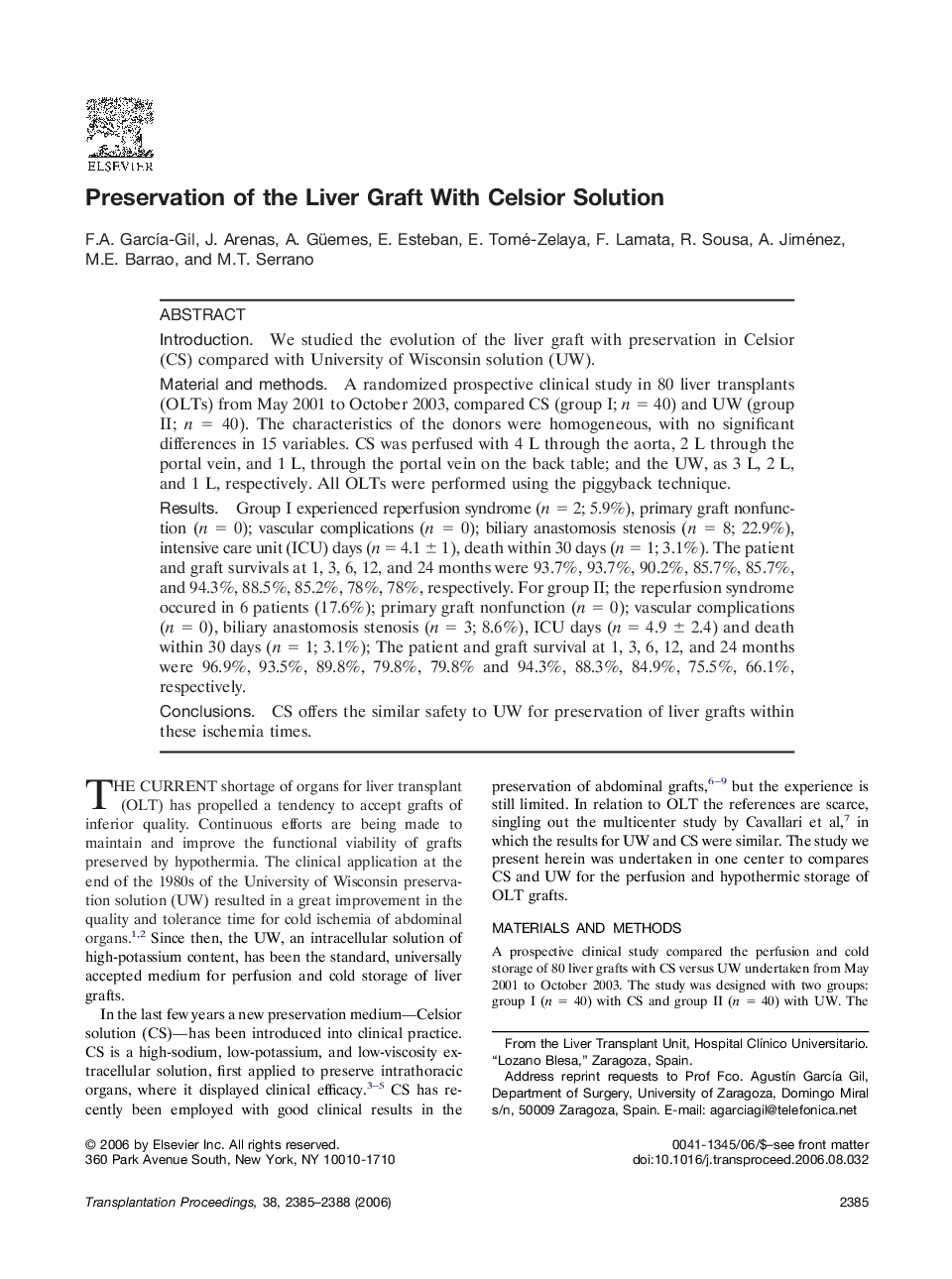| Article ID | Journal | Published Year | Pages | File Type |
|---|---|---|---|---|
| 4261490 | Transplantation Proceedings | 2006 | 4 Pages |
IntroductionWe studied the evolution of the liver graft with preservation in Celsior (CS) compared with University of Wisconsin solution (UW).Material and methodsA randomized prospective clinical study in 80 liver transplants (OLTs) from May 2001 to October 2003, compared CS (group I; n = 40) and UW (group II; n = 40). The characteristics of the donors were homogeneous, with no significant differences in 15 variables. CS was perfused with 4 L through the aorta, 2 L through the portal vein, and 1 L, through the portal vein on the back table; and the UW, as 3 L, 2 L, and 1 L, respectively. All OLTs were performed using the piggyback technique.ResultsGroup I experienced reperfusion syndrome (n = 2; 5.9%), primary graft nonfunction (n = 0); vascular complications (n = 0); biliary anastomosis stenosis (n = 8; 22.9%), intensive care unit (ICU) days (n = 4.1 ± 1), death within 30 days (n = 1; 3.1%). The patient and graft survivals at 1, 3, 6, 12, and 24 months were 93.7%, 93.7%, 90.2%, 85.7%, 85.7%, and 94.3%, 88.5%, 85.2%, 78%, 78%, respectively. For group II; the reperfusion syndrome occured in 6 patients (17.6%); primary graft nonfunction (n = 0); vascular complications (n = 0), biliary anastomosis stenosis (n = 3; 8.6%), ICU days (n = 4.9 ± 2.4) and death within 30 days (n = 1; 3.1%); The patient and graft survival at 1, 3, 6, 12, and 24 months were 96.9%, 93.5%, 89.8%, 79.8%, 79.8% and 94.3%, 88.3%, 84.9%, 75.5%, 66.1%, respectively.ConclusionsCS offers the similar safety to UW for preservation of liver grafts within these ischemia times.
